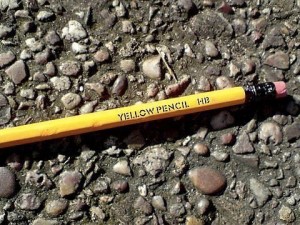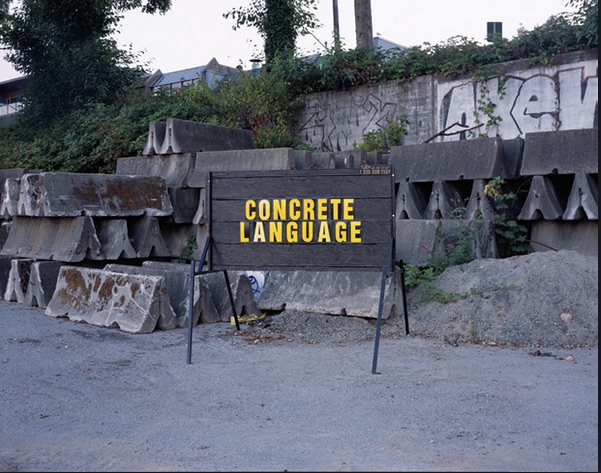Context
The Irish Environmental Protection Agency (EPA) has issued a Draft Strategy 2016-2020 called “Our Environment – Our Well Being.” It is the Agency’s fifth formal strategy and EPA has solicited public consultation on the draft strategy.
Believing that the language one uses reflects what one believes and does, we thought we would look closely at the language EPA uses and offer some suggested edits.
Generally, the language is abstract and general, with little concreteness. As a result it is difficult, if not impossible, to pin down exactly what is being promised, and judging whether objectives are met in 2020 will be speculative. The EPA Strategy document unfortunately is very similar to the government’s Climate Adaptation Plan in 2012. The Irish National Climate Change Adaptation Framework document was covered in an earlier Report (Feb 2013) in this magazine, “Ireland’s Climate Adaptation Strategy: The Emperor Has No Clothes On.” There we pointed out the failings of Ireland’s adaptation framework and noted “The report says almost nothing concrete about adapting … [and] fails to advance an understanding or commitment to what specifically has to be done to adapt.” As we further noted, “the report is particularly disappointing as there has been solid research and case studies on both models for and practical applications of adaptation,” including work done under the EPA Science, Technology, Research and Innovation for the Environment (STRIVE) research programme. Ironically we implicitly praised EPA’s work under STRIVE only to find that its own Strategy is not any better in concreteness than the government’s Climate Adaptation Plan.
For a contrast in how an agency or organization can produce a specific, concrete expression of what it intends to do to protect our environment, take a look at the European Union 7th Environmental Action Programme (EAP) to 2020: ‘Living well, within the limits of our planet’, and the New York City PlaNYC , under former Mayor Michael Bloomberg (2007).
While the EU 7th EAP offers its fair share of rather general aspirations, it does at least at times make its commitments, or hopes, transparent. For example, it will ensure that by 2020 the loss of biodiversity and the degradation of ecosystem services, including pollination, are halted, ecosystems and their services are maintained and at least 15% of degraded ecosystems have been restored. Annex, paragraph 28.
In PlaNYC, New York City, under Bloomberg, made a host of specific commitments for active solutions to problems in air quality, climate change, energy use, land use, transportation and water quality and infrastructure. The PlaNYC was filled with specific commitments, e.g.: Ensure that all New Yorkers live within a 10–minute walk of a park; Open 90% of our waterways for recreation by reducing water pollution and preserving our natural areas; Improve travel times by adding transit capacity for millions more residents, visitors, and workers; Reduce our global warming emissions by 30%
Some commitments, for example congestion pricing, went unfulfilled, because of political opposition; some, for example planting 1 million trees in the city by 2020, were completed early. The point is that the commitments were real as they were concrete, measureable and transparent.
The present EPA Strategy is unfortunate because we know the management and staff at EPA are quite capable of laying things squarely on the table and telling us what they hope and need to accomplish to improve our common environment. We just don’t see those skills applied to this Strategy. Tellingly, there is no numerical expression of what EPA commits to accomplish by 2020.
Beyond these structural weaknesses, here are some specific suggestions for editing the text.
EPA Mission:
“To protect and improve the environment as a valuable asset for the people of Ireland. To protect our people and the environment from the harmful effects of radiation and pollution.”
Rather than classifying what EPA protects and improves as an “asset,” would it not be more appropriate, even better, to classify it as a “resource.” An “asset” is “an item of value owned,” and the concept of ownership seems integral to the term. See, e.g., the National Asset Management Agency.
Yet that is contrary to what we understand the environment to be: not something that is owned by anyone but enjoyed by all. A “resource” is “a natural feature or phenomenon that enhances the quality of human life.” Of course it can also mean “a natural source of wealth or revenue.” But generally “natural wealth” suggests nature which is shared by all, not owned by the few.
While we sometimes speak of resources as having economic value, so we can convince others (especially economists and some government officials) to help us protect those resources, we do not always need to pander to the crowd. Rather we need to always remember, and reinforce the notion, that resources belong to the public.
This would certainly be more in keeping with the tone and intent of the Papal encyclical Laudato Si.
EPA Vision:
“A clean, healthy and well protected environment supporting a sustainable society and economy.”
We would like to see an EPA vision where the economy supports the environment, or at least where the environment and economy support each other, in a mutual admiration and benefit society.EPA Values and What We Do:
“Implement effective regulation and environmental compliance systems to deliver good outcomes for people and the environment and target those who don’t comply.”
Would it be too much to expect the EPA to give us something more than “good” outcomes. How about really good or terrific or ambitious outcomes or more than what we would expect. Surprise us.
“We regulate in a fair, proportionate and transparent manner and target those who don’t comply.”
It makes sense that EPA will target those who don’t comply, because targeting those who do comply would be over the top, a bit too much even for those who would like to see more and more aggressive enforcement from EPA. To say you’re going to target those who don’t comply, several times, is saying the obvious, like repeatedly saying we will enforce the law when that is your mission. It makes the readers suspect that you’re not really too keen on proactive enforcement against those who break the law.
“We design and deliver services from the citizen’s point of view.”
That’s an admirable value. Can you tell us how you learn what the citizen’s point of view is. Or is it more accurate to ask, can you tell us how you learn what the various citizens’ points of view are. And what happens when those views differ from the government point of view?
“Provide high quality, targeted and timely environmental data, assessments and evidence to inform decision making by citizens, businesses and Government.”
You do indeed do this and you do it well.
“Work with others to advocate for a clean, healthy and well protected environment and sustainable environmental behaviour.”
It seems like you got carried away with the language as getting a handle on what you mean by “sustainable environmental behavior” is not easy. What is “environmental behavior”? Behaving while out in the woods? Treating wildlife with kindness? Do you mean turning off lights, using less water, reducing your cows’ methane?
Strategic Goals for 2016-2020
Regulator
As a Regulator you commit to “proportionate” regulation, which suggests an even-handed, moderate approach to regulation. It suggests you do not want to be seen as overly assertive or aggressive in your regulation. Many would not mind you being assertive. With the recent, still unfolding VW scandal we have seen what happens when government agencies rely on industry self-regulation and fail to oversee their obligations.
Leader in Evidence and Knowledge
You commit to more targeted environmental “assessments.” It would have been very helpful to understand what kinds of assessments and for what projects or purposes, and to what extent the public will be involved.
Advocate and Partner
By 2020, you commit to have “Availed of opportunities to integrate environmental priorities and sustainability into sectorial economic and social policies.” There are some rather important sectors for you to engage with, most especially the agriculture and energy sectors. For example, in your assessment of fracking, integrating your work with what is happening in agriculture (more dairy cows and more methane) should certainly inform your analysis of the impacts from even more methane generated by and escaping any fracking operations. And that same assessment should be integrated with Ireland’s energy policies and whether further, heavier reliance on fossil fuels from fracking makes sense. While you are not primarily responsible for these sectors you have committed to integrating environmental priorities with them. But we have no idea how you’re going to ensure that the environmental consequences of agricultural and energy policies are fully considered, and by whom. It does seem that EPA’s hands have been tied, by the government and/or lobbyists, when it comes to agriculture policy, such as Harvest 2020 and its progeny.
Key Environmental Challenges
You commit to development of a “holistic national response” to climate change. Not sure what a “holistic” response would look like, but it suggests some sort of all-embracing approach or a consideration of the whole of climate change rather than separate parts. Again this would suggest that you will consider and assess how all parts of the society, all sectors, are contributing to climate change and how each should contribute to the mitigation and adaption to climate impacts. But the recent climate act leaves it to each sector to define its role and contributions. How will you engage in this process? Certainly a climate change “secretariat” within EPA (perhaps the most concrete contribution in the Strategy document) should elevate that issue, depending on what powers and resources, including staff, are given to it by EPA and/or the government.
Organisation
You commit to a “culture of reform and innovation” within EPA, yet there is little sense of what this means or, more importantly, how the EPA management will effect such a culture of reform. These things do not happen spontaneously but need commitment, passion, and resources. One could start by defining what needs reform and where is innovation lacking within the organization.
The environmental community needs EPA, and EPA needs a proactive environmental community helping it put pressure where it belongs in protecting our shared resources. Some more concrete language and action from EPA would be helpful.
Sources
Ireland’s Climate Adaptation Strategy: The Emperor Has No Clothes On in the Reports section of irish environment magazine (February 2013). www.irishenvironment.com/reports/irelands-climate-adaptation-strategy-the-emperor-has-no-clothes-on/
European Union 7th Environment Action Programme to 2020: ‘Living well, within the limits of our planet’ DECISION No 1386/2013/EU OF THE EUROPEAN PARLIAMENT AND OF THE COUNCIL of 20 November 2013 on a General Union Environment Action Programme to 2020 ‘Living well, within the limits of our planet’ eur-lex.europa.eu/legal-content/EN/TXT/?uri=CELEX:32013D1386
PlaNYC: A Greener, Greater New York www.nyc.gov/html/planyc/downloads/pdf/publications/full_report_2007.pdf\
“Asset.” Merriam-Webster Dictionary. www.merriam-webster.com/dictionary/asset
“Resource.” Merriam-Webster Dictionary. www.merriam-webster.com/dictionary/resource
“Holistic.” Merriam-Webster Dictionary. www.merriam-webster.com/dictionary/holistic
National Asset Management Agency www.nama.ie/
Lisa W. Foderaro, “Bronx Planting Caps Off a Drive to Add a Million Trees,” The New York Times (20 Oct 2015). www.nytimes.com/2015/10/21/nyregion/new-york-city-prepares-to-plant-one-millionth-tree-fulfilling-a-promise.html





No comments yet, add your own below